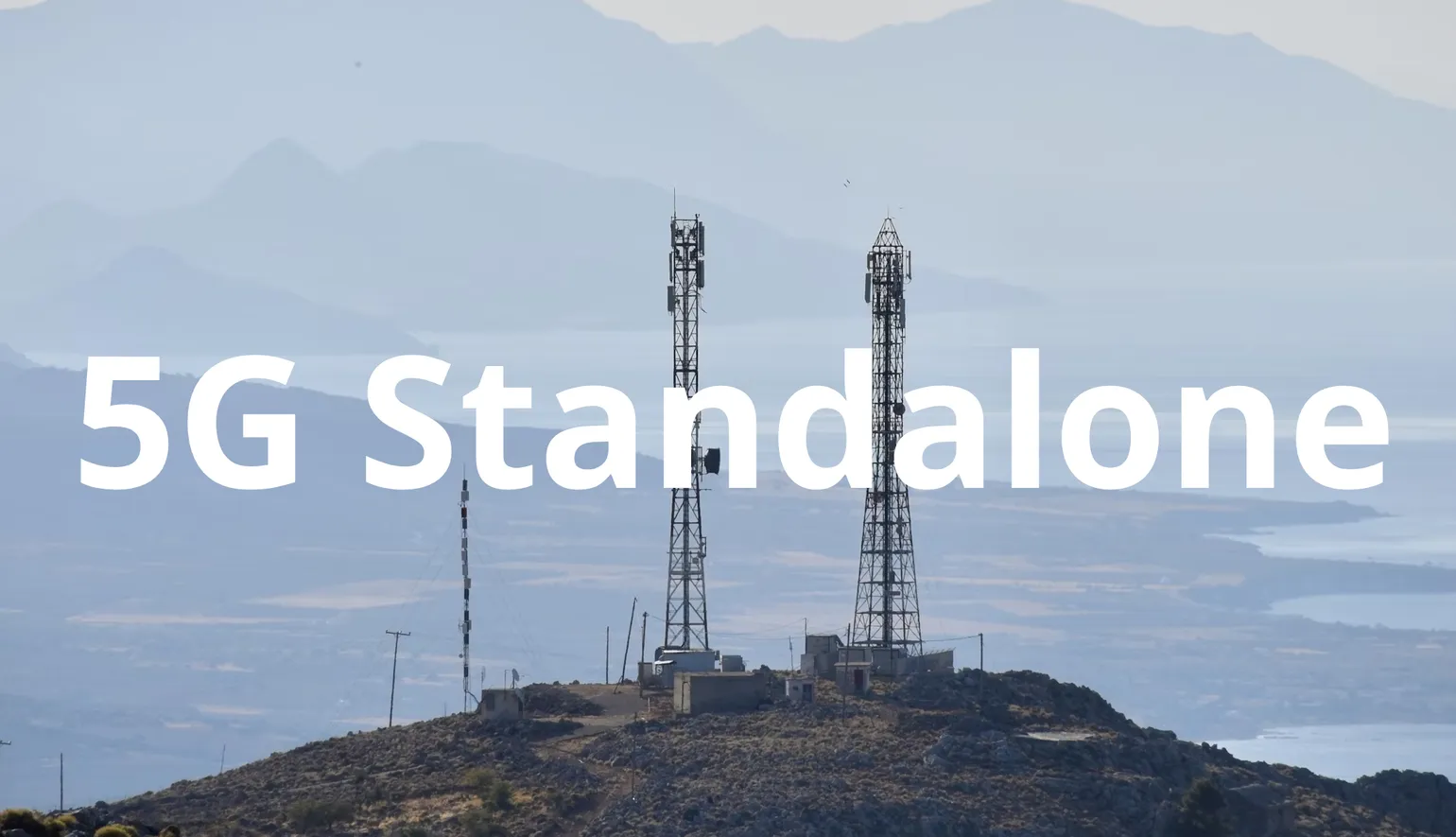What is 5G Standalone and which networks support it?

5G Standalone, also known as 5G SA, is network infrastructure specifically built for 5G broadcast. With 5G Standalone, 5G standards and protocols are at the core of the network, with dedicated equipment specifically designed to support the full 5G specification, for faster speeds, lower latency and improved battery efficiency.
Currently, the majority of 5G coverage in the UK uses 5G Non-standalone, also known as 5G NSA. This infrastructure uses 5G radio equipment to broadcast a 5G signal, however the core of the network is powered by existing 4G equipment.
As a result, 5G in the UK is currently not able to deliver true 5G. Speed, latency and efficiency is held back by the use of old 4G infrastructure.
5G Standalone is able to deliver the full 5G specification, with theoretical speeds up to 20 Gbps. Dedicated infrastructure and equipment is used for the sole purpose of delivering 5G.
5G Standalone also achieves lower latency speeds, increased security with better encryption protocols and greater power efficiency, with up to 25% improved battery life for connected devices.
Vodafone and O2 are the only two networks to have launched 5G Standalone, but in a very limited capacity - essentially a trial period. It’s currently confined to a few select cities, with support for a limited number of devices.
What are the advantages of 5G Standalone?

The main advantages of 5G Standalone, from a consumer point of view, are faster download and upload speeds, lower latency and improved battery efficiency.
By implementing the full 5G specification, 5G Standalone has the potential to deliver speeds up to 20 Gbps. This is the theoretical maximum speed under perfect conditions - real world usage is likely to vary, but will still be a significant improvement over 5G Non-standalone.
In addition to faster download and upload speeds, 5G Standalone can reduce latency speeds, theoretically as low as 1ms and between 5 - 10ms in real world scenarios. On the other hand, 5G Non-standalone can potentially reach just under 30ms latency speeds, with real world usage around 50-100ms. Lower latency results in shorter response times for time-sensitive use cases, such as video calling and online gaming. Essentially, the lower the latency, the better the user experience.
5G Standalone is also around 25% more power efficient than 5G Non-standalone for connected devices, with reports showing up to 3 hours gained in battery life on average. Networks also benefit from greater power efficiency with 5G Standalone infrastructure, reducing their costs and potentially passing the savings on to customers.
5G Standalone can also deliver Vo5G (Voice over New Radio), which is similar to LTE calling, except it uses 5G instead of 4G. This is not possible with 5G Non-standalone.
5G Standalone has the potential to deliver similar performance to Wi-Fi. In the future, it’s possible that most people will no longer require a fixed home internet connection, and can instead rely solely on 5G - even for time-sensitive use cases such as online gaming.
Furthermore, a single 5G Standalone access point can support up to 1 million connected devices within a 1 square kilometre, which is 10 times more compared to 5G Non-standalone, which can only support around 100,000 connected devices. This means improved connectivity for densely populated cities and areas, including football stadiums and concerts.
There are also a few less noticeable advantages. 5G Standalone delivers increased security, utilising improved encryption protocols and standards. In addition, 5G Standalone supports network slicing (unlike 5G Non-Standalone), which allows the creation of multiple virtual networks from a single access point. Each slice can have its own bandwidth and latency requirements, meaning IoT devices, such as smart metres, can have its traffic separated from devices like phones and laptops, allowing for priority allocation where appropriate.
What are the disadvantages of 5G Standalone?

The main disadvantages of 5G Standalone are mostly teething problems, which will resolve over time.
Currently, 5G Standalone infrastructure is considerably more expensive compared to 5G Non-standalone. New, dedicated equipment must be purchased and installed to deliver 5G Standalone access points. As a result, networks could potentially mitigate the cost by increasing their prices for customers.
There are also a few compatibility issues. Simply having a 5G phone is not enough - it must specifically support 5G Standalone technology.
In addition, O2 and Vodafone, the two networks who currently support 5G Standalone in confined areas, have limited support to select devices. For example, both networks have not enabled 5G Standalone for Apple devices, despite the iPhone supporting the technology since the iPhone 13. However, this is not a technical limitation, but rather O2 and Vodafone testing within a trial period, and limiting support to a few select devices initially.
An updated SIM card is also required for 5G Standalone. O2 claims SIM cards issued from January 2023 onwards should support 5G Standalone. If you have an older SIM card, you will likely need to contact your network for a free replacement SIM card.
Which networks support 5G Standalone?

Vodafone and O2 are currently the only two networks who support 5G Standalone. Support is limited to a few select cities, with gradual expansion throughout 2024.
Vodafone have branded their 5G Standalone network as 5G Ultra, but otherwise it’s no different compared to 5G Standalone from O2, or any other future networks which will support the technology.
The UK Government has set a target to deliver 5G Standalone to all populated areas by 2030, in its latest Wireless Infrastructure Strategy.
BT, who own EE, are currently conducting private 5G Standalone trials, but have not given a date for a consumer rollout. However, according to several reports, EE are expected to begin a public rollout of 5G Standalone later this year.
Three have not disclosed when they will launch their 5G Standalone network, nor have there been any reports on its progress. However, Vodafone has claimed that approval of its potential merger with Three will significantly speed up the rollout of 5G Standalone.
Vodafone 5G Standalone is currently available in the following 4 locations:
- Cardiff
- Glasgow
- London
- Manchester
O2 5G Standalone is currently available in the following 14 locations:
- Belfast
- Birmingham
- Cardiff
- Glasgow
- Leeds
- Lincoln
- Liverpool
- London
- Manchester
- Newcastle
- Nottingham
- Sheffield
- Slough
- York
Do I need a special phone for 5G Standalone?

Simply having a 5G phone is not enough to get 5G Standalone - it must specifically support 5G Standalone technology.
However, a recent report by Global Certification Forum found 96% of all 5G devices support 5G Standalone. It’s therefore very likely that if you have a 5G phone, it will support 5G Standalone out of the box.
The iPhone has supported 5G Standalone since the iPhone 13, and Samsung have supported 5G Standalone since the Galaxy S21. All Google Pixel phones which are 5G enabled will also support 5G Standalone.
Despite this, O2 and Vodafone are currently limiting 5G Standalone to a few select devices.
O2 and Vodafone currently do not support 5G Standalone with any iPhone. Both networks are mainly trialling the technology with Samsung Galaxy devices and a few other select phones.
This is not a technical limitation with iPhones, however. The reason why O2 and Vodafone have singled out iPhones is not clear, but it’s likely because they do not want to overload the network during what is basically a trial period. The technology is still new and has not been fully battled tested in the UK.
Vodafone 5G Standalone device support list:
- Samsung Galaxy S24
- Samsung Galaxy S24+
- Samsung Galaxy S24 Ultra
- Samsung Galaxy S23
- Samsung Galaxy S23+
- Samsung Galaxy S23 Ultra
- Samsung Galaxy S22
- Samsung Galaxy S22+
- Samsung Galaxy S22 Ultra
- Samsung Galaxy S21 5G
- Samsung Galaxy S21+ 5G
- Samsung Galaxy S21 Ultra 5G
- Samsung Galaxy Z Flip 5
- Samsung Galaxy Z Fold 5
- OPPO X3
- OPPO X5
O2 5G Standalone device support list:
- Samsung Galaxy S24
- Samsung Galaxy S24+
- Samsung Galaxy S24 Ultra
- Samsung Galaxy S23 FE
- Samsung Galaxy S23+
- Samsung Galaxy S23 Ultra
- Samsung Galaxy A34 5G
- Samsung Galaxy A54 5G
- Samsung Galaxy Z Flip5 5G
- Samsung Galaxy Z Fold5 5G
- Samsung Galaxy S22
- Samsung Galaxy S22+
- Samsung Galaxy S22 Ultra
- Samsung Galaxy S21 5G
- Samsung Galaxy S21+ 5G
- Samsung Galaxy S21 Ultra 5G
- Sony Xperia 1 V
- Sony Xperia 5 V
- Samsung Galaxy S23
- Netgear M6
- Samsung A25
FAQs
Can I get 5G Standalone?
5G Standalone is available in a number of cities with O2 and Vodafone. Currently, only a select number of devices are supported by both networks, with a gradual expansion throughout 2024.
EE is expected to launch their 5G Standalone network in late 2024. Three have not revealed when they will be launching 5G Standalone.
When will 5G Standalone coverage reach 100%?
The UK Government has set a target to deliver 5G Standalone to 99% of populated areas by 2030, as noted in its latest Wireless Infrastructure Strategy.
Do iPhones support 5G Standalone?
iPhones have supported 5G Standalone since the iPhone 13. However, O2 and Vodafone, who are currently the two UK networks who have 5G Standalone, do not support iPhone devices. This is because 5G Standalone is being rolled out in limited numbers initially, only to a select number of devices.
Does 5G Standalone cost any extra?
No, 5G Standalone does not cost any extra. It costs the same as a regular 5G plan.